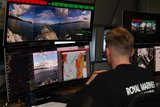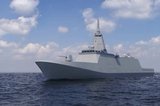JSOW C-1 completes final integrated test
Raytheon and the US Navy have successfully completed the final free flight of the Joint Standoff Weapon (JSOW) C-1 in its integrated testing phase, the company announced on 15 April.
The JSOW C-1 demonstrated its effectiveness against maritime targets in motion during the development test. It is now on track to begin operational testing in the spring of 2015 and begin deliveries for the naval fleet in 2016 after the operational testing is successfully completed.
During the development test, two F/A-18E/F aircraft executed a pre-launch handoff, after which the weapon was released 35 nautical miles from the target. The aircraft transferred control of the weapon once again and sent a post-launch retargeting command to reroute the JSOW C-1 from its initial target ship to a higher priority target.
The JSOW C-1 gave real-time in-flight track and bomb hit indication status messages to the controlling aircraft while it flew to its target.
Celeste Mohr, JSOW programme director, Raytheon, said: 'JSOW C-1 will be the US navy's first air-launched, net enabled weapon to provide warfighters with the vital capability to engage both stationary land-based and manoeuvring sea-based targets.
'The affordable JSOW is critical to countering today's advanced, emerging threats.'
More from Naval Warfare
-
![NATO tests use of “undetectable, jam-proof” laser communication in maritime scenarios]()
NATO tests use of “undetectable, jam-proof” laser communication in maritime scenarios
As part of its effort to better prepare its capabilities for operations in contested and congested scenarios, NATO evaluated a Lithuanian ship-to-ship terminal designed to not be susceptible to enemy interference.
-
![US Navy advances with the Harpoon Service Life Extension Programme]()
US Navy advances with the Harpoon Service Life Extension Programme
The US Navy plans to improve Harpoon’s anti-ship and land attack capabilities by equipping the missiles with sensors and technologies required for succeeding in future battlespace.
-
![Mitsubishi eyes future with Australia’s Mogami selection]()
Mitsubishi eyes future with Australia’s Mogami selection
With Australia’s selection of the Mogami-class for Project Sea 3000, Mitsubishi is investigating local production in the next decade as potential export opportunities emerge.
-
![Thales’ new Sonar 76Nano could equip UK Royal Navy on anti-submarine warfare missions]()
Thales’ new Sonar 76Nano could equip UK Royal Navy on anti-submarine warfare missions
The new sonar is designed to equip uncrewed underwater vessels, with the potential to be used by the Royal Navy for its Atlantic Bastion and Atlantic Net missions.
-
![Hanwha wins Australian government approval to increase its stake in Austal]()
Hanwha wins Australian government approval to increase its stake in Austal
The contract would mean the two shipbuilders can collaborate strategically and enhance shipbuilding capabilities in Western Australia.























